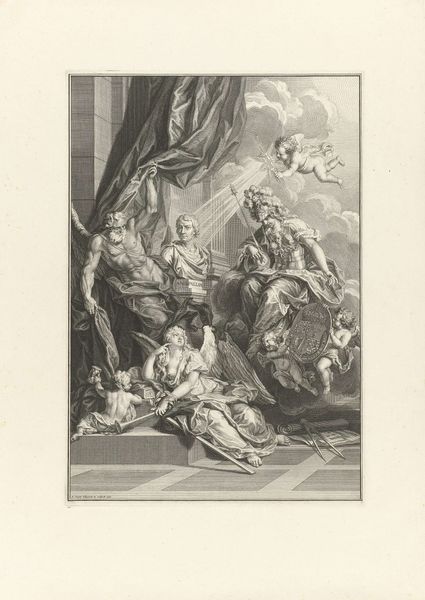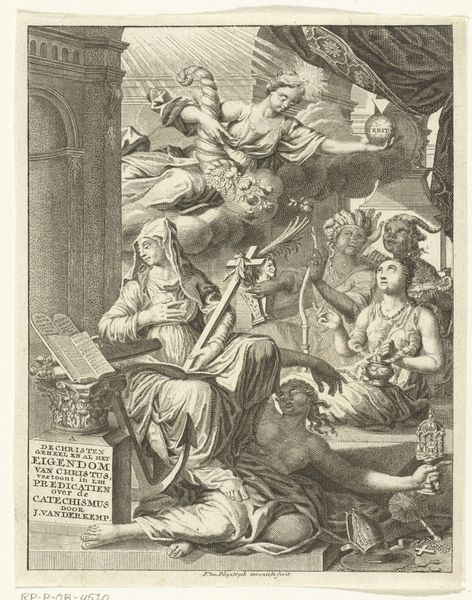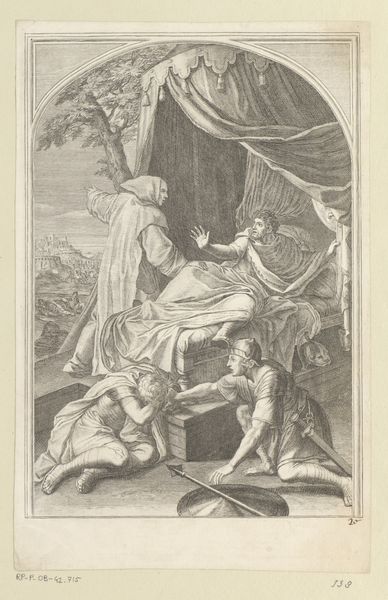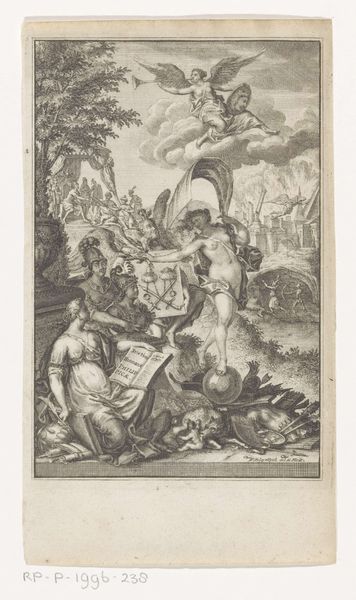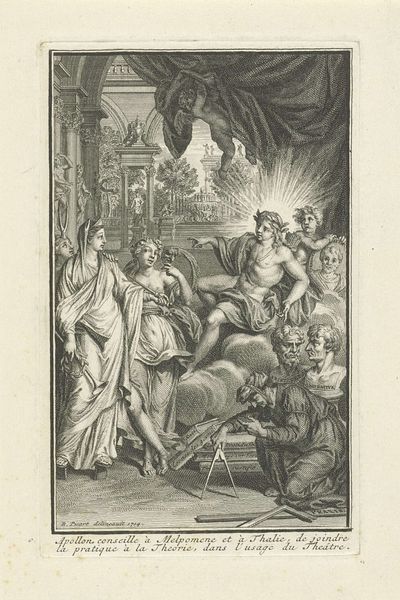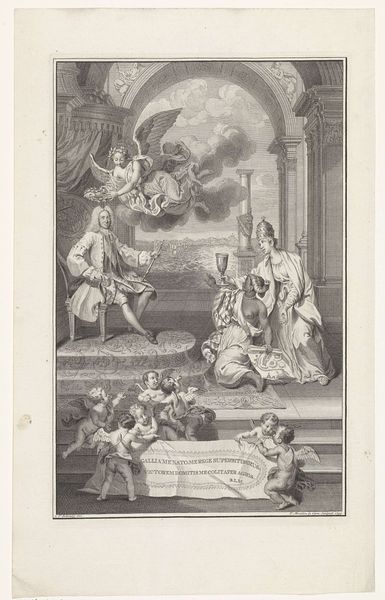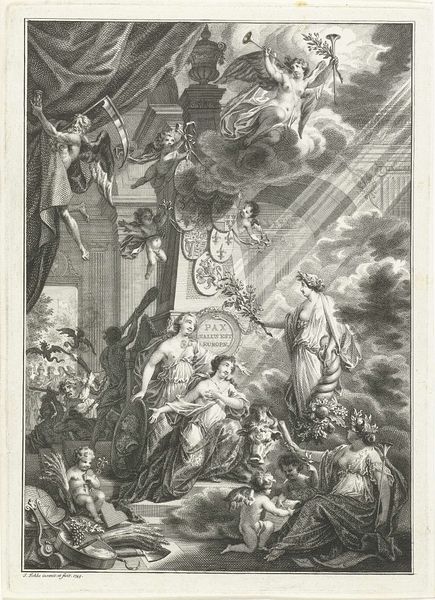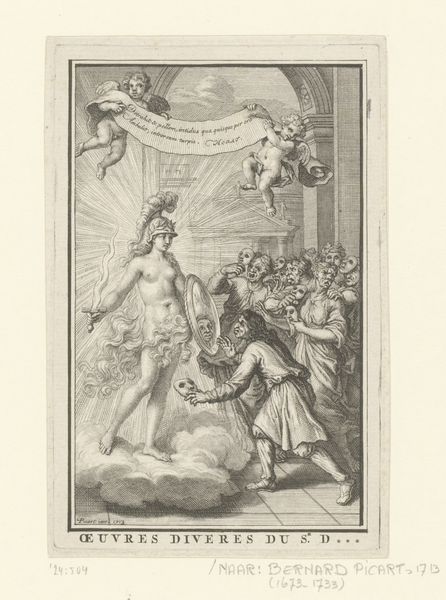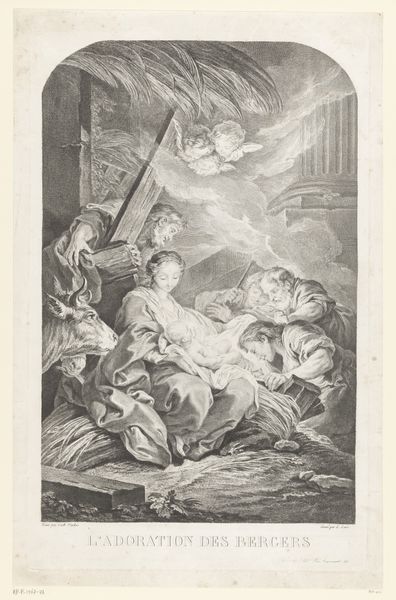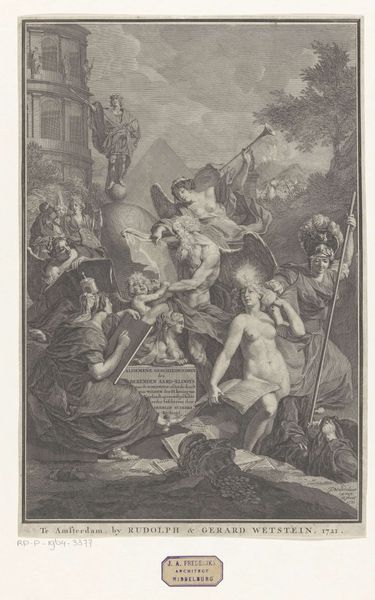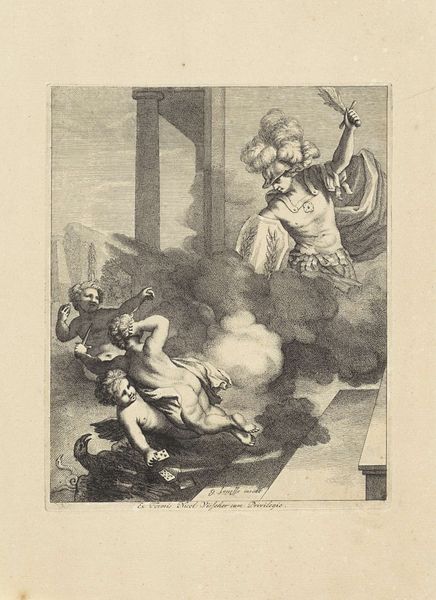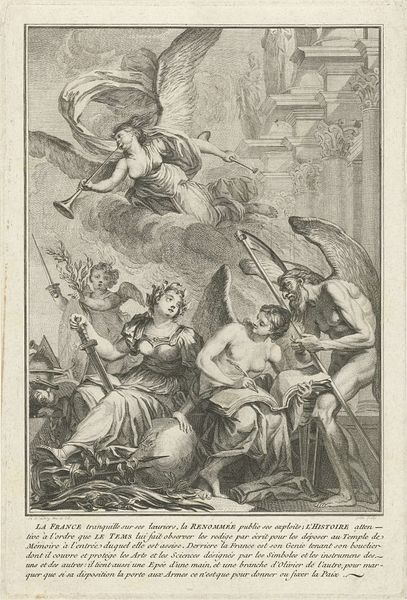
print, etching, engraving
#
baroque
# print
#
etching
#
old engraving style
#
figuration
#
history-painting
#
engraving
Dimensions: height 367 mm, width 228 mm
Copyright: Rijks Museum: Open Domain
Curator: Looking at this print, "Petrus door een engel uit de gevangenis bevrijd," made between 1720 and 1728 by Joseph Mulder, I'm struck by the artist’s command of Baroque drama in such a linear medium. It really is impressive how much he can express with lines, shades and textures in this etching/engraving. Editor: Yes, my immediate feeling is one of theatrical dynamism! The figures burst forth from the composition. I'm getting a real sense of dramatic religious fervor, freedom fighting oppression. Curator: Indeed, and notice how Mulder depicts the angel. Angels, throughout different faiths and stories, frequently function as figures of deliverance or divine will—their depiction here signifies divine intervention to break the literal and symbolic chains binding Peter. Angels aren't random. They mean something. Editor: Precisely. Seeing those slumbering guards also tells a clear story: not only a moment of liberation, but also social commentary on power, control, and, perhaps, the vulnerability of those who enforce oppressive systems. Their sleep underscores the powerlessness of earthly authority when faced with divine will, but also questions how authority can blindly sleep on injustice, or enforce power with no real knowledge of its social and psychological implications. Curator: Absolutely. Mulder uses the visual language of his time to amplify this moment of freedom, and spiritual liberation. Observe, for example, the visual cues that the artist added. Peter has chains, symbolizing oppression. But also that very particular angelic iconography -- almost theatrical with those robes flowing and the theatrical smoke, signaling, in the viewer’s mind, something supernatural that contrasts with the guards sleeping. Editor: Yes! And perhaps there's also an intersectional narrative woven in? Who is truly liberated and who remains sleeping under oppressive chains and the weight of armor. Who actually wakes up? Is liberation fully materialized in this piece? What would real "freedom" mean to those guards who blindly follow and perpetuate systems? Curator: Food for thought indeed! The power of religious, or freedom seeking symbols continue to influence, consciously or unconsciously, viewers across time, revealing that the memory of visual symbols shapes our thoughts in surprising ways. Editor: Agreed. This Baroque print encapsulates not only a story of biblical liberation but also sparks reflection on power structures, both divine and earthly, and the often-murky dynamics of resistance.
Comments
No comments
Be the first to comment and join the conversation on the ultimate creative platform.
